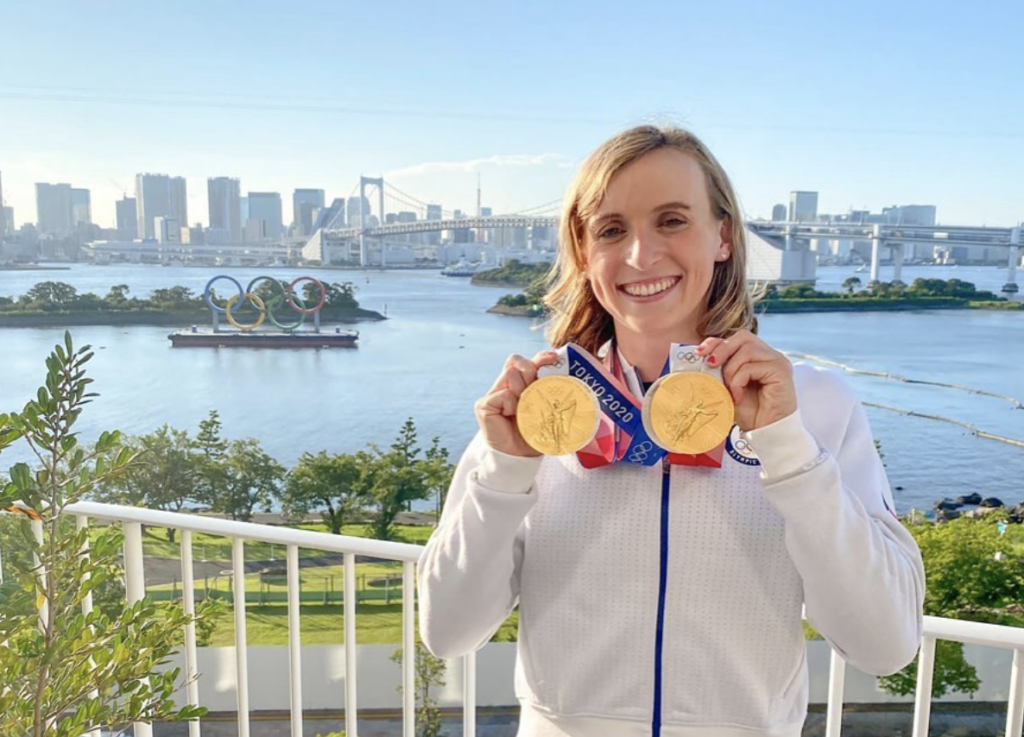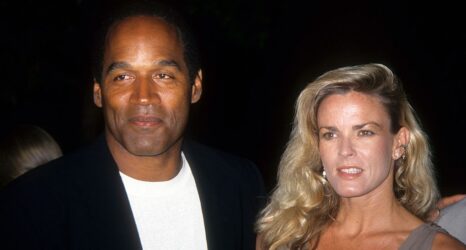
When women were first allowed to compete in the Olympics in 1900, they made up 2.2 percent of Olympians. They were only permitted to compete in sports that were deemed “ladylike” enough—tennis, croquet, sailing, golf and equestrianism.
In 2014, the International Olympic Committee (IOC) added the goal to “achieve 50 percent female participation in the Olympic Games and to stimulate women’s participation and involvement in sport” to their agenda. During the past seven years, the Olympics have inched closer and closer to gender parity. As a committee spokesman told the New York Times last week: This year, that goal has been realized.
In this year’s Olympics, women make up 48.8 percent of all Olympians—more than in any Games in history.
And during the opening ceremony, almost all countries had both a woman and a man lead their teams while holding their nation’s flags. Team USA has a particularly remarkable female showing this year: Out of the 613 athletes competing on the USA Olympic team, 329 are women, marking the third year in a row there’s been more women athletes than men on the U.S. team.
Moreover, women have competed in every sport on the Olympic program since the 2012 London Games. This year, in 18 events, men and women will compete together—twice as many as in the 2016 Rio Games.
“The Olympics is definitely a place where women in sports can shine this year,” said Jane McManus, director of the Center for Sports Communication at Marist College.
Women Continue to Shatter Glass Ceilings and Make History
Katie Ledecky, a Maryland native on the American Olympic team, won gold last week in the first-ever women’s 1500-meter freestyle. Previously, the grueling distance race was only available to men, but in an effort to make the Olympics more equitable, it was opened up to women for the first time in history this summer in Tokyo.
“I just wanted to get the job done tonight,” Ledecky said after her race. “I just think of all the great female swimmers the U.S. has had that haven’t had the opportunity to swim that event.”
On Monday, August 2, New Zealander Laurel Hubbard became the first-ever openly transgender person to compete in the Olympics. Ahead of her competition in weightlifting, IOC medical and science director, Dr. Richard Budgett praised Hubbard’s “courage and tenacity” and said, “Everyone agrees that trans women are women.”
“I am aware that my participation has been controversial,” Hubbard said on Monday, despite not reaching the final round. “Thank you to the IOC for living up to the Olympic values and showing that sport is for all and that weightlifting can be done by all types of people.”
“Sport Appeal, Not Sex Appeal”
Women Olympians have also enjoyed more broadcast coverage in recent years: Women received 55 percent of prime-time coverage in 2012, the first year researchers noticed a shift in coverage from majority male to majority female. And this trend of more Olympic air time for women athletes has continued.
“Women are seen more on the screen, heard more in the commentary and are generally the focus of more coverage,” said James Angelini, an associate professor and director of graduate studies at the University of Delaware, who conducted research on the 2018 Games in South Korea.
Moreover, when it comes to media coverage, Olympic officials say this year they’re shifting focus to “sport appeal, not sex appeal,” attempting to move away from airing sexualized images of female athletes. “You will not see in our coverage some things that we have been seeing in the past, with details and close-ups on parts of the body,” said Yiannis Exarchos, chief executive of Olympic Broadcasting Services.
Women athletes welcome the shift. The German women’s gymnastic team wore long unitards to compete this year, in contrast with the typical bikini-cut leotards gymnasts usually wear. “Our message behind the unitard was to encourage young women and girls in all sports to feel good in their skin, wear whatever they feel like,” said German gymnast Sarah Voss.
But not all women athletes feel the need to cover up: The women’s beach volleyball team has many clothing options, but opted to wear the traditional bikinis in Tokyo due to the weather. “We’re getting sweaty. So the bikinis are the most comfortable and practical choices for our uniforms,” said Sarah Pavan. “Instead of seeing us as being sexualized, please see us as being great role models of what strong, confident women look like today.”
The Road Ahead
“Where [the Olympics] is now versus where it was ten years ago … it’s just a night and day change,” IOC Sports Director Kit McConnell recently told ABC News. “Now there are medal opportunities, there are qualification opportunities, there are pathways for the athletes.”
While great progress has been made when it comes to women’s athletic representation, the room for improvement lies at the executive level: Women still make up only 33.3 percent of the IOC executive board.
Despite this poor representation, McConnell’s reflection over the past decade underscores the rapid rate at which the Olympics is uprooting its own inequity. With continued persistence, in the next ten years these changes will hopefully be apparent not only in the competitive sphere, but amongst the administration as well.
Up next:





